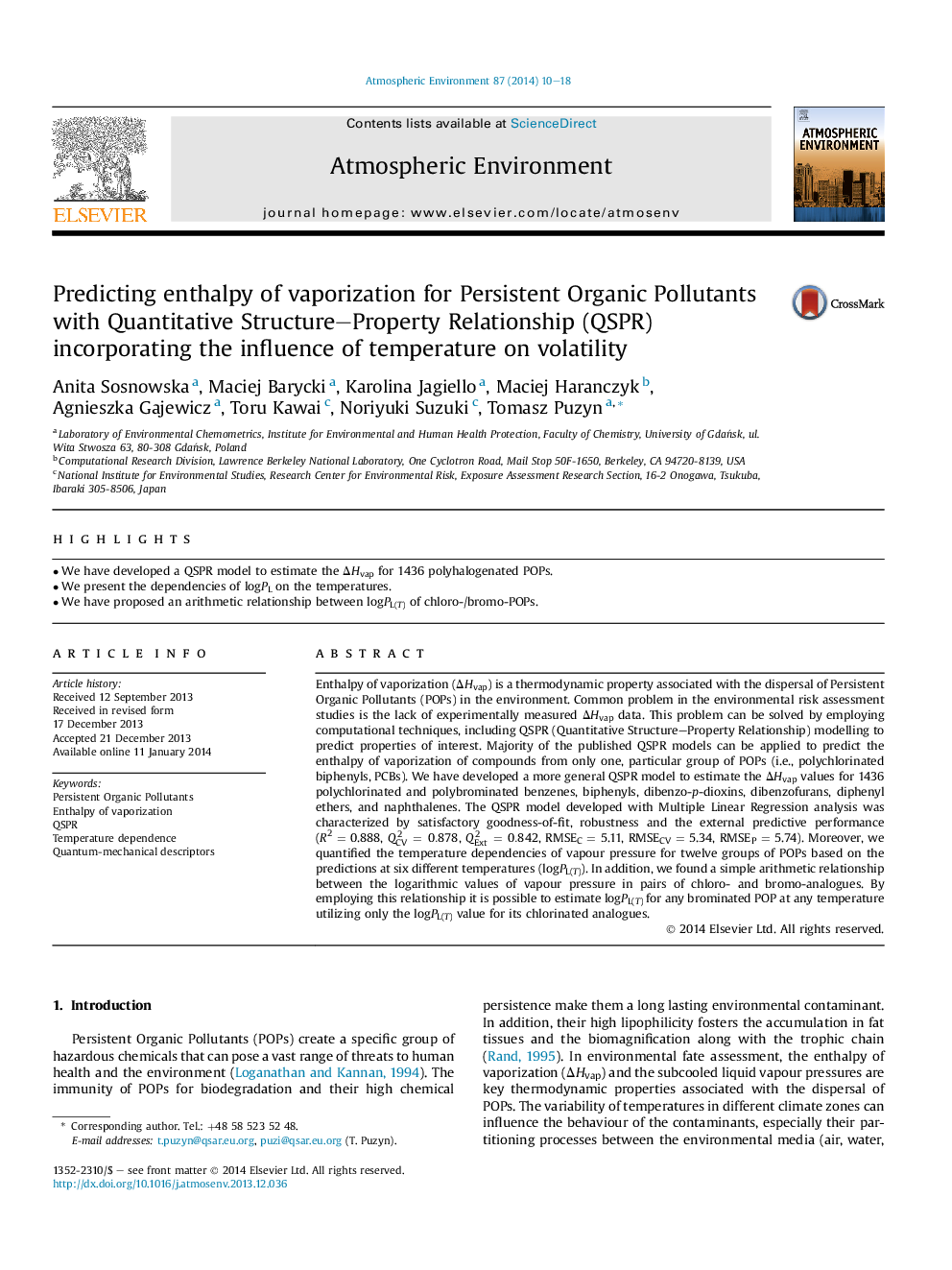| کد مقاله | کد نشریه | سال انتشار | مقاله انگلیسی | نسخه تمام متن |
|---|---|---|---|---|
| 6340328 | 1620384 | 2014 | 9 صفحه PDF | دانلود رایگان |

- We have developed a QSPR model to estimate the ÎHvap for 1436 polyhalogenated POPs.
- We present the dependencies of logPL on the temperatures.
- We have proposed an arithmetic relationship between logPL(T) of chloro-/bromo-POPs.
Enthalpy of vaporization (ÎHvap) is a thermodynamic property associated with the dispersal of Persistent Organic Pollutants (POPs) in the environment. Common problem in the environmental risk assessment studies is the lack of experimentally measured ÎHvap data. This problem can be solved by employing computational techniques, including QSPR (Quantitative Structure-Property Relationship) modelling to predict properties of interest. Majority of the published QSPR models can be applied to predict the enthalpy of vaporization of compounds from only one, particular group of POPs (i.e., polychlorinated biphenyls, PCBs). We have developed a more general QSPR model to estimate the ÎHvap values for 1436 polychlorinated and polybrominated benzenes, biphenyls, dibenzo-p-dioxins, dibenzofurans, diphenyl ethers, and naphthalenes. The QSPR model developed with Multiple Linear Regression analysis was characterized by satisfactory goodness-of-fit, robustness and the external predictive performance (R2Â =Â 0.888, QCV2=0.878, QExt2=0.842, RMSECÂ =Â 5.11, RMSECVÂ =Â 5.34, RMSEPÂ =Â 5.74). Moreover, we quantified the temperature dependencies of vapour pressure for twelve groups of POPs based on the predictions at six different temperatures (logPL(T)). In addition, we found a simple arithmetic relationship between the logarithmic values of vapour pressure in pairs of chloro- and bromo-analogues. By employing this relationship it is possible to estimate logPL(T) for any brominated POP at any temperature utilizing only the logPL(T) value for its chlorinated analogues.
Journal: Atmospheric Environment - Volume 87, April 2014, Pages 10-18